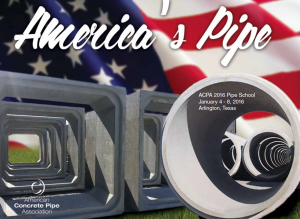It took nearly 20,000 feet—more than three and a half miles—of concrete pipe running under a railroad, a local road, several access roads, an expressway, and a golf course, and over two
streams to reach from the Gerald R. Ford International Airport (GFIA) to its new onsite stormwater detention and treatment system, and from there to an outfall on the Thornapple River.
“This is something that started with our de-icing program,” says Roy Hawkins, R.L.A., planning engineer for GFIA, the owner and operator of stormwater system. At the airport in Grand Rapids, MI, airlines use propylene glycol to deice aircraft in cold weather conditions. During storm events and snowmelt, runoff from the
east side of the airport flowed directly into the Thornapple River. Runoff from the west side fl owed into Trout Creek, a tributary of the river.
The description of the concrete pipe system begins on page 41 and extends to page 43 – within a larger article by Janet Aird called “Pipes, Detention, and Sand Filtration Solutions for impervious drainage areas.”
An article on the project by Roy E. Hawkins, R.L.A., Airport Planning Engineer, was the cover story of the Summer 2015 Issue of Concrete Pipe News.
Read the online article.
Read the pdf version.


